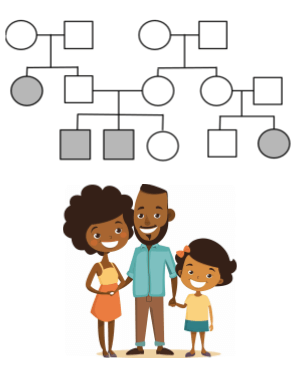
Pedigree charts are graphical representations of a family’s genetic history. Geneticists use the charts to study inheritance patterns of specific traits or genetic disorders within families.
These charts display family relationships, including parents, offspring, siblings, and sometimes more distant relatives. You can trace a trait or disorder through many generations.
By examining a pedigree chart, geneticists track the inheritance of specific traits or genetic disorders within a family. The chart can reveal the pattern of inheritance, or whether a gene is dominant, recessive, or even sex-linked. My biology students learn about genetic disorders, such as sickle cell anemia, hemophilia, and muscular dystrophy.
Biology students learn to analyze pedigrees as part of a unit on genetics. Pedigrees are usually learned soon after students have a grasp of Punnett squares and the concept of segregation. Some students will have an easy time with pedigrees, depending on how well they understood genetic crosses.
Resources on Pedigrees
I include pedigrees with the unit on human genetics where students also learn how to interpret a karyotype to diagnose chromosome disorders. These Google Slides include an overview of how to interpret a pedigree.
I use several variations of pedigree charts for students to practice analyzing the inheritance of different traits.

